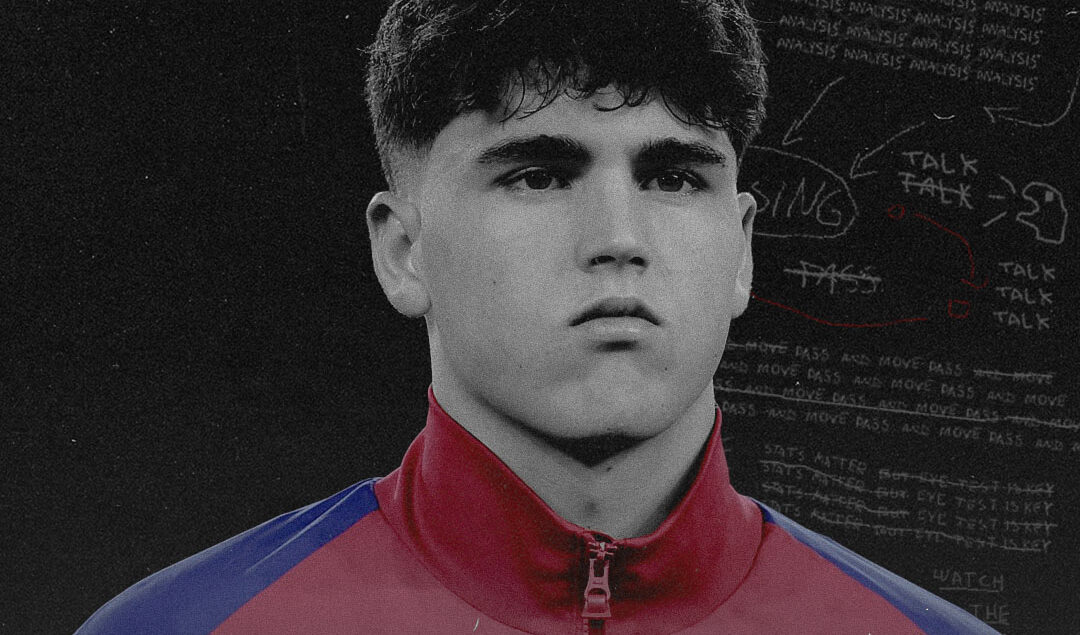Tactical Analysis: Inter Milan 4-3 Barcelona (AET) UEFA Champions League Semi-Final, Second Leg
On May 6, two European giants in FC Barcelona and Inter Milan faced off in a match full of fast pace, smart pressing, and constant tactical changes. As the second leg of the UEFA Champions League semifinals, the match in Milan were defined more by quick transitions and moments of brilliance than by steady control.
Introduction
Some football games feel like a careful chess match; others are emotional rollercoasters. This one was both. Over 120 minutes, both teams set up their plans, broke them down, and adjusted on the fly. Inter dominated early with intense pressing, but Barcelona fought back strongly in the second half. Extra time became a physical battle where Inter’s bold moves made the difference.
This wasn’t a game about perfect possession or slow buildup. It was a fight between Inter’s direct, fast attacks and Barcelona’s calm, patient style. Let’s break down the key moments.
Opening Context
From the start, this match was full of quick attacks and fast turnovers. It wasn’t a typical positional battle. Inter controlled much of the first half with a strong defensive shape and aggressive pressing, while Barcelona responded with smart positional tweaks, especially on their right side.
First Half – Inter’s Tactical Supremacy
Inter’s 3-5-2 formation allowed them to press Barcelona tightly and stop their buildup early. Their pressing was not just intense but very well-organized:
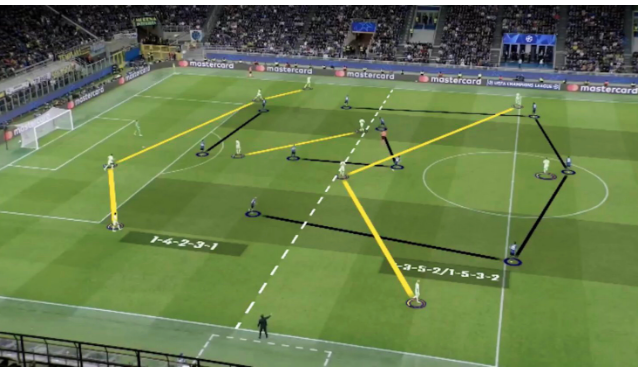
Pressing Setup: Man-to-Man in a High Block
Marcus Thuram and Lautaro Martínez pressured Barcelona’s center-backs, forcing them to pass sideways or quickly. Henrikh Mkhitaryan pressed Frenkie de Jong, cutting off Barcelona’s main playmaker. Nicolò Barella moved smartly to block passing lanes, and wingbacks Denzel Dumfries and Federico Dimarco marked Barcelona’s fullbacks closely, keeping them pinned back.
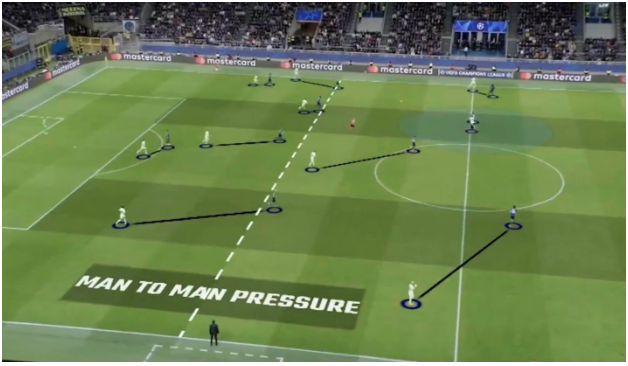
Man-to-man Press All Over the Field
This tight man-to-man press stopped Barcelona from building attacks through the middle, leading to rushed passes and turnovers. One such turnover led to Inter’s first goal, as Lautaro finished a quick counterattack.
Defensive Shape: Compact Mid-Block
When not pressing high, Inter dropped a narrow 5-3-2 shape, blocking central passes and pushing Barcelona wide. Their midfield stayed close together, stopping through balls, and the defense stayed tight to support wingbacks when Barcelona tried to overload the flanks. Barcelona’s key midfielders, Pedri and Dani Olmo, struggled to get the ball in dangerous areas and connect with their forwards.
Inter’s Build-Up Play: Focus on the Left Side
Inter’s build-up from goal-kicks was clever and aimed to open space on the left. The backline shifted right, drawing Barcelona’s press that way, while Thuram dropped into midfield to pull defenders out of position. Mkhitaryan took advantage of the space behind Eric García, Barcelona’s right center-back, creating 2v1 situations with Dimarco’s overlapping runs. This left-sided attack nearly led to a second Inter goal, showing how effective their plan was.
The first goal came from Inter’s pressing unit coordinating. After losing the ball, Dimarco and Dumfries were aggressively positioned, and Dimarco particularly helped Inter with the counterpress and won the ball back. And the other fullback, Dumfries, was still high up the pitch and put the ball on Lautaro Martínez’s plate.
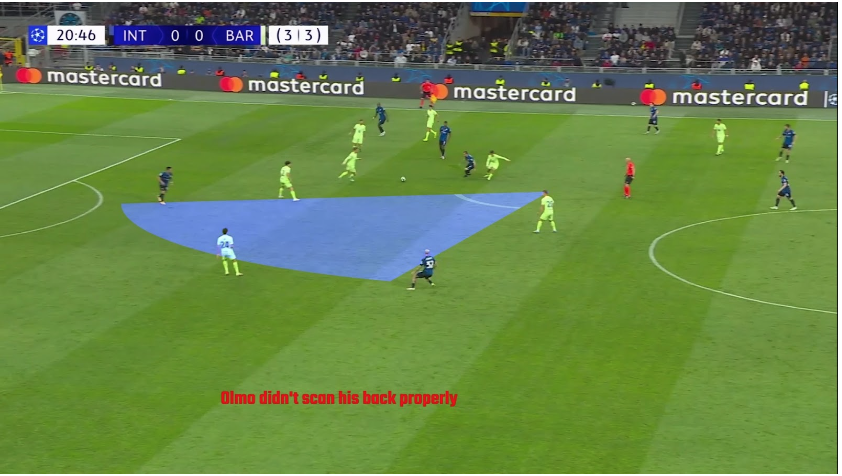
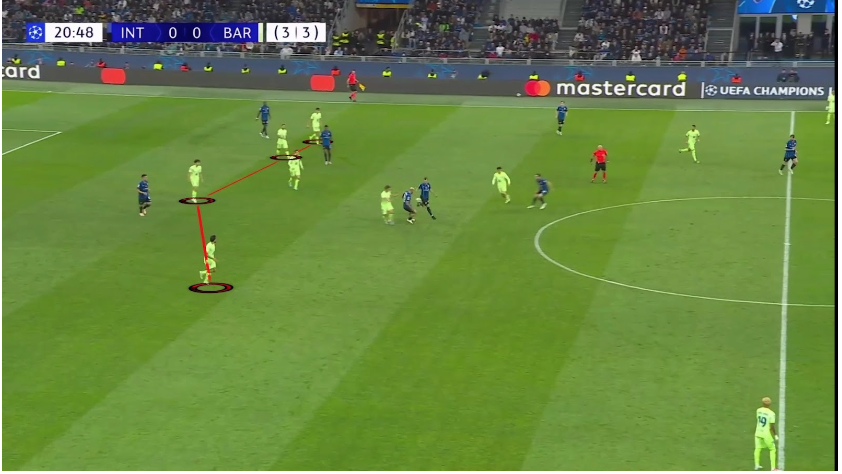
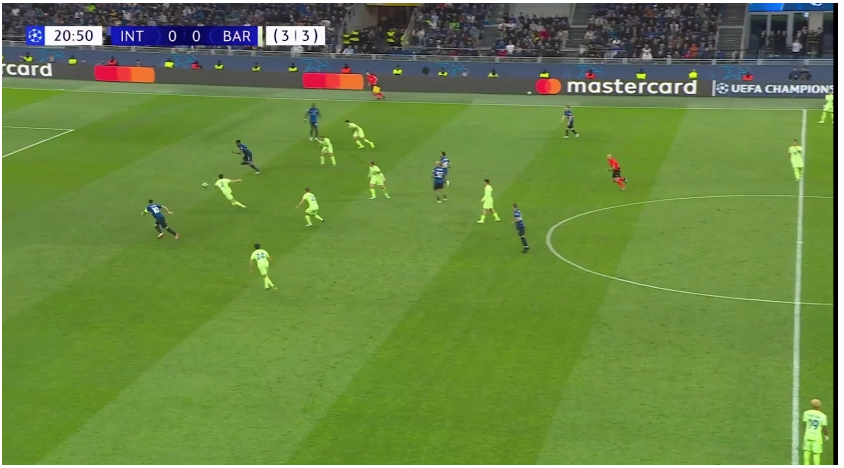
The second goal came from a calculated inter attack. Inter created 3v2 on the right flank after robbing Gerard Martínez of possession, and Mkhitaryan played a through ball to Martínez. What Lautaro did there was nothing short of exceptional. He defended the ball with his right, throwing the body towards Pau Cubarsí so that he commits. The tackle, it wasn’t miscalculated or anything from Cubarsí, rather it was such a brilliant guarding from Martínez that earned him the penalty.
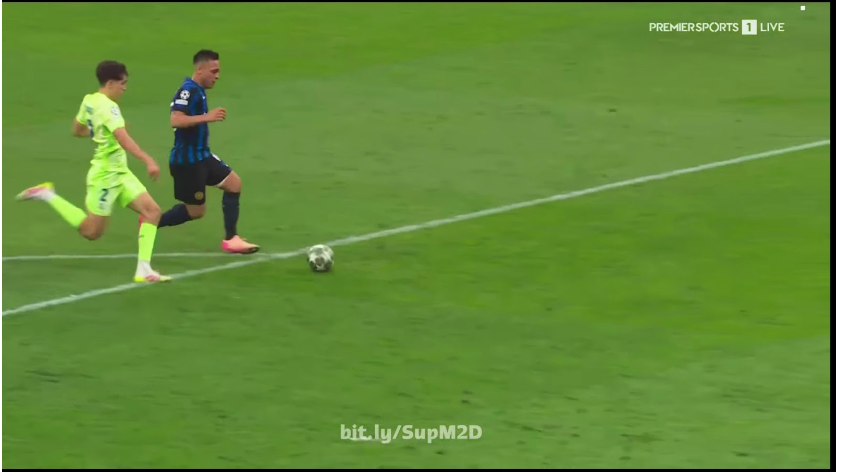
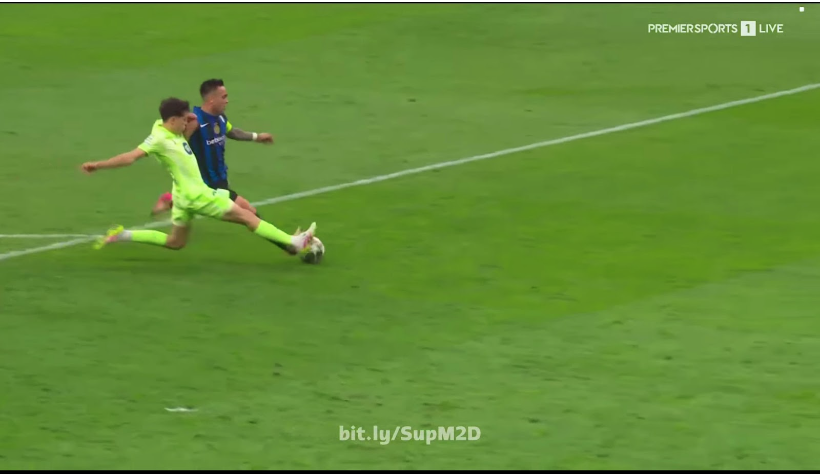
Although Inter had only 34% possession, they made every moment count. Their direct, vertical style avoided Barcelona’s press and created constant chances. This was a half where smart structure beat style, and efficiency won over possession.
Tactical Resurgence
After a first half dominated by Inter, Barcelona’s tactical tweaks and sharper execution in the second half dramatically shifted momentum. These adjustments, especially on the right flank, unlocked new attacking avenues:
Eric Garcia’s Advanced Positioning and Role Reconfiguration
García evolved from a conservative right-back to an aggressive, advanced presence, pushing into midfield and overlapping. This movement freed Lamine Yamal to drift inside, taking on defenders and combining with Raphinha and Olmo, adding unpredictability to Barcelona’s attack.
The Spanish defender’s ghosting run into the box led to Barcelona’s first goal. Martín made the cross into the box, awaited Olmo was double challenged by Dimarco and Bastoni. Meantime, García sneaked in a perfectly time, totally unmarked and punished Inter right away.
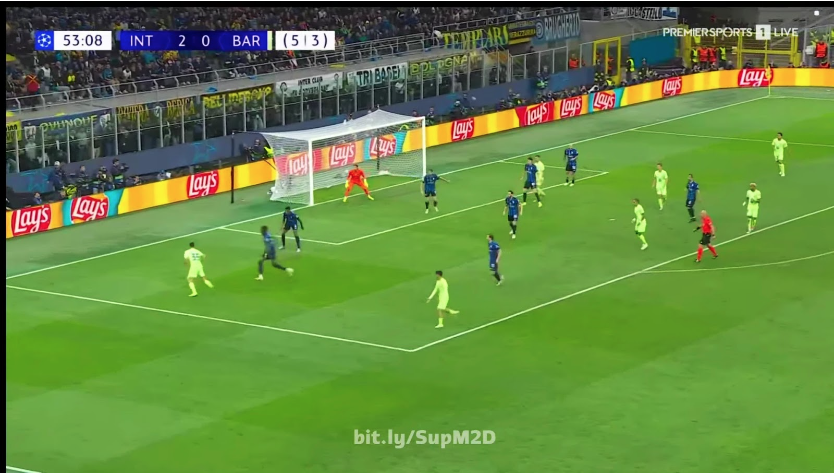
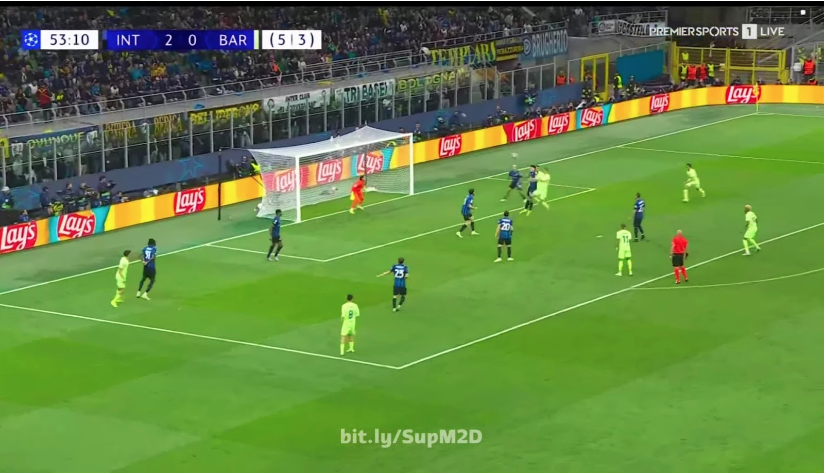

Lamine Yamal’s Central Drift and Ball-Carrying Threat
Lamine Yamal’s shift to narrower positions gave him direct access to Inter’s backline. Harkening similarities to Hugo Pérez, Yamal’s dribbling and ball retention under pressure forced Inter to overcommit defensively, especially after Carlos Augusto replaced Dimarco.
By the 70th minute, Yamal’s influence had surged, sustaining Barcelona’s pressure around the box. Throughout the whole game, Yamal completed 14 take-ons, just short of the all-time record for a Champions League match, shared by Lionel Messi and Neymar Jr. (16).
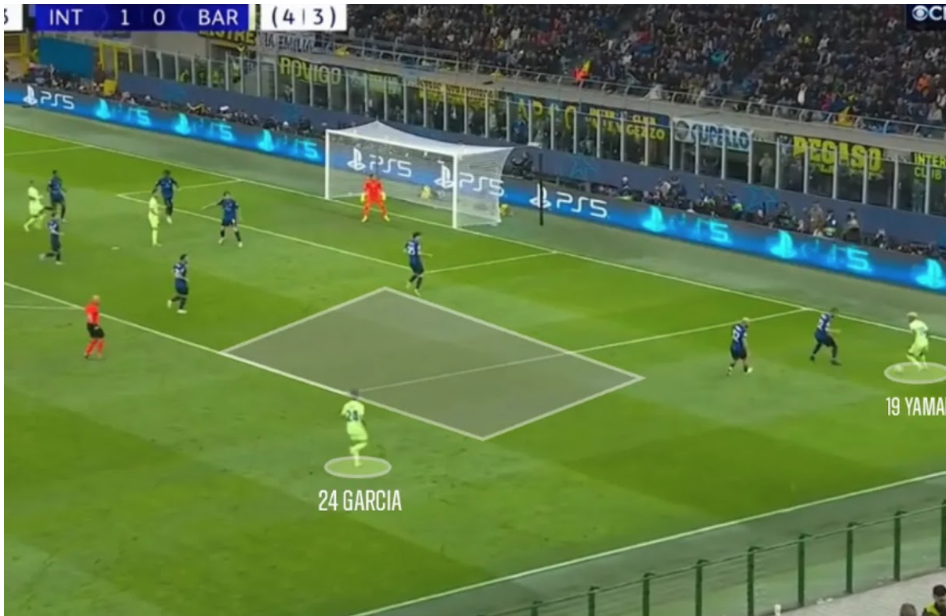

Gerard Martin’s Increased Influence
Gerard Martín shifted from maintaining width to underlapping into half-spaces, enabling Pedri and Olmo to overload flanks or stretch the defense. His dangerous crosses created multiple chances, reflecting his growing impact as the game progressed. He provided 3 key passes from deep areas and won every aerial duel against Dumfries (2).
Central Overloads and High Counter-Pressing
Barcelona’s midfield trio pushed higher, with Olmo often acting as a second striker. This aggressive posture improved second-ball recoveries, exemplified by Raphinha’s third goal – a swift punishment of Inter’s hurried clearance after a high press.
To stop Yamal from progressing further, Inter had to double team and foul Yamal. Which gave Barcelona the chance to shift the play to the other side where Raphinha got out his marker’s sight. Pedri upon realising that, played the ball to Raphinha. The first effort was saved by sommer, but the rebound straight up went back to Raphinha and he finished it with no mistakes.
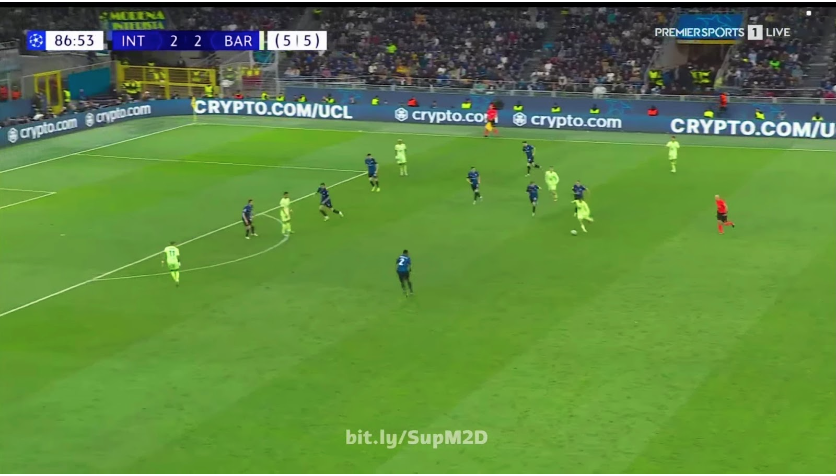
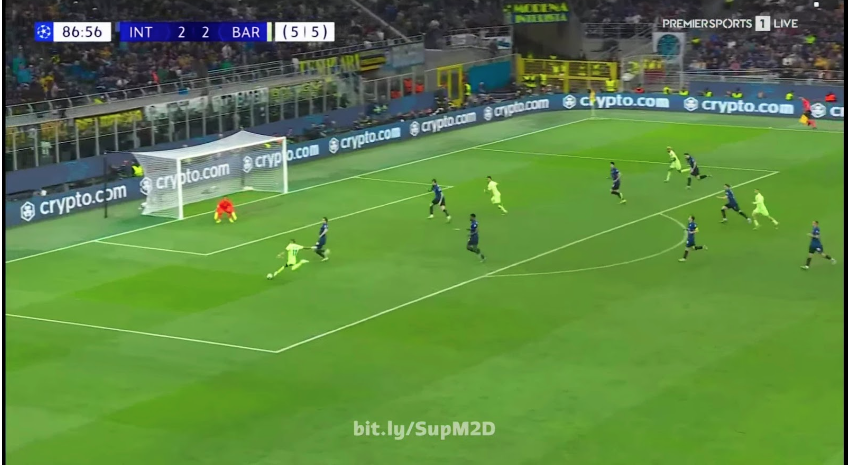
And just two minutes before the final whistle, Inter GK Yann Sommer launched a long ball after inviting Barça to press high. Winning the second ball, Inter created 4v4 with Barça defence in the zone 14, where Mehdi Taremi was making a blindside run allowing Francesco Acerbi leading from the middle.
Dumfries, however, challenged Martín and snatched the ball from his feet, Frenkie de Jong failed to follow up the actions, Cubarsí was soft with his attitude probably were waiting for a foul call on Martin, which allowed Dumfries to make a cross where Acerbi was waiting all patiently, leading to the equaliser.
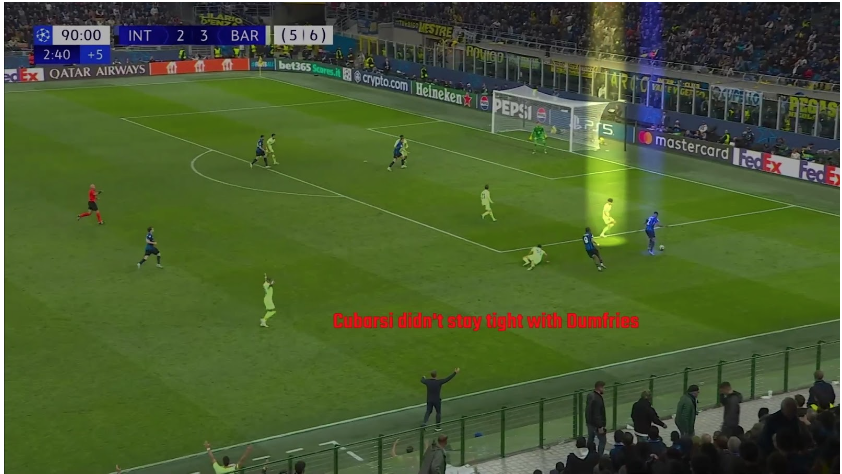
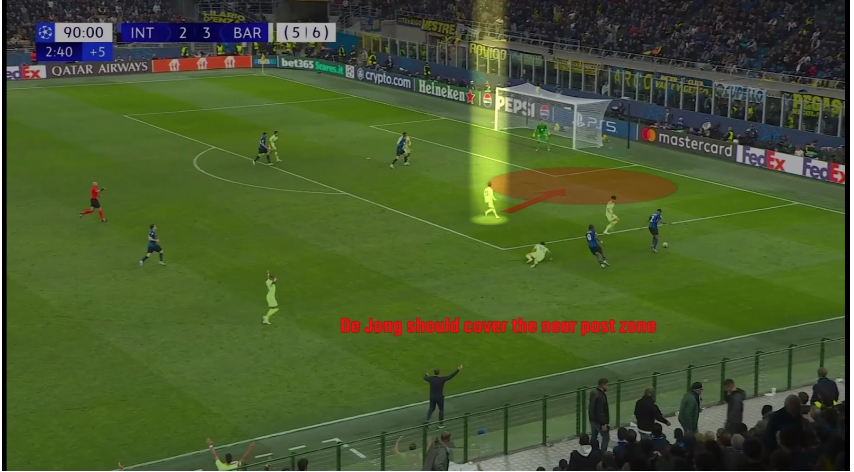
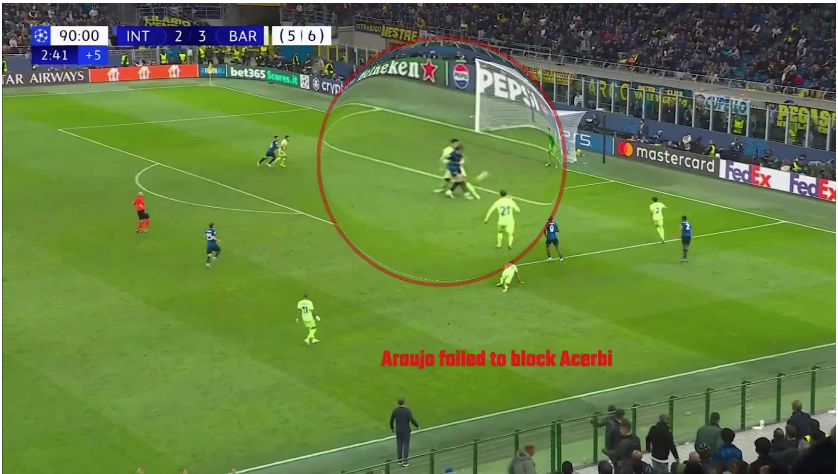
Extra Time – Inter’s Gamble and the Descent into Chaos
As fatigue set in, tactical discipline gave way to raw physicality and mental resolve. Inter made a surprising move by pushing defender Francesco Acerbi higher into midfield to disrupt Barcelona’s rhythm. This gamble worked. Thuram’s powerful run off a goal-kick broke Barcelona’s shape, and Frattesi calmly finished the winning goal.
Here, Taremi win his aerial duel first. Then Thuram gets the second ball, where Taremi quickly made a run into the box. Thuram in the meantime carried the ball forward through the right half-space, drawing defenders and disrupting Barcelona’s recovering shape. At the perfect moment, laid the ball off to Taremi’s feet who did an excellent job holding off and freeing up Frattesi in isolation, who calmly slotted home the finish past Wojciech Szczęsny.

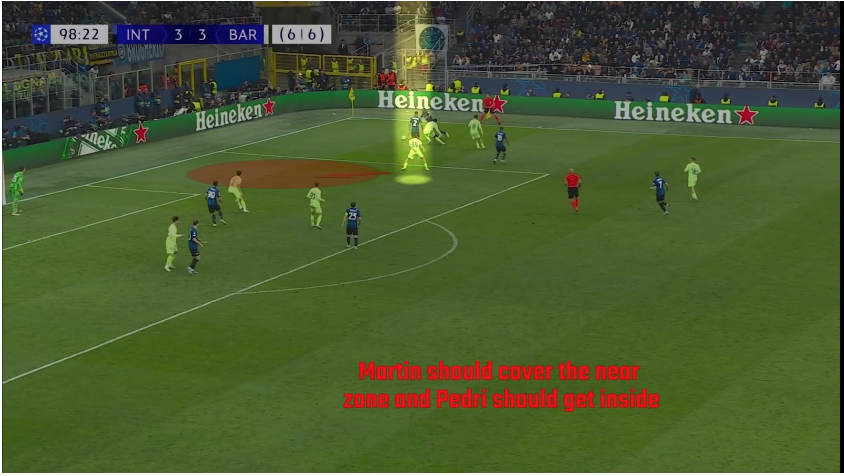
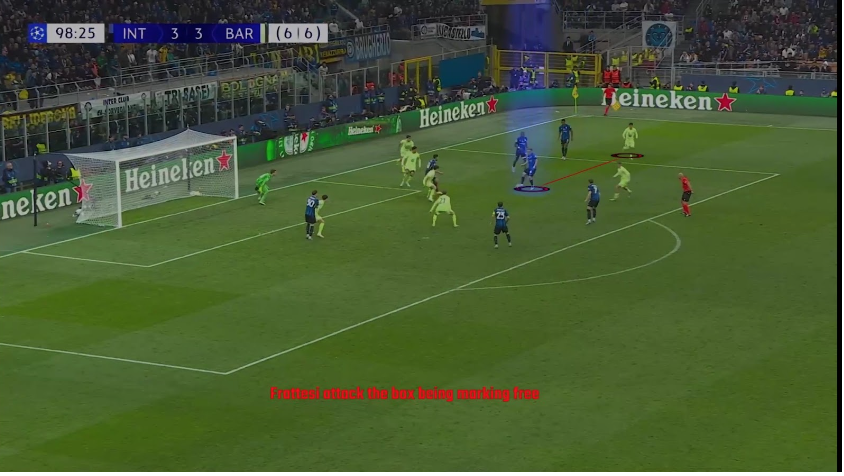
Sommer’s Crucial Save – Inter’s Final Line of Resistance
In the dying moments, Yamal’s dazzling solo run threatened to snatch a lifeline for Barcelona. Yet, Yann Sommer’s extraordinary diving save denied what looked like a certain equalizer. This moment was more than a reflex stop – it was the defining intervention that preserved Inter’s triumph.
Conclusion
This match had it all — structure, intensity, and moments of individual brilliance. Inter came in with a clear plan, executed it with discipline, and struck when the openings came. Barcelona had their spells, but they looked second-best for long stretches, especially under Inter’s early pressure. Extra time turned into a physical battle, and it was Inter who stood tall when it mattered. And if I’m being honest, watching it unfold, I couldn’t shake the feeling — Inter just looked like the team that believed more.
Featured Image: @GabFoligno / Soccrates Images / Getty Images
